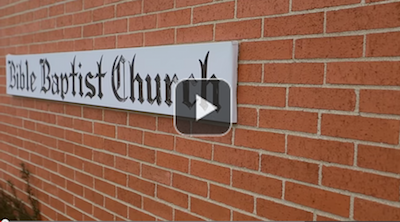DECEMBER 20 / DECEMBER 27, 2015
CHRIST’S TRIAL / PETER’S DENIAL
INTRODUCTION:
1. We will now consider Christ’s arraignment, trial, conviction, and condemnation in the ecclesiastical court before the great Sanhedrin, of which body the high priest was the president, or judge of the court.
a) Thus was Christ brought to the palace of Caiaphas who was the acting, Roman appointed, high priest that year. Annas was the rightful high priest since the office was a lifetime appointment. It was Caiaphas who gave counsel to the Jews that it was expedient that one man should die for the people. (See John 18:13, 14; 11:49, 50)
b) Some of the chief priests and elders were so engaged against Christ that they went with the mob to the Garden of Gethsemane to apprehend Him. The great majority of them were assembled at the house of Caiaphas.
2. We also have here the sad story of Peter’s denial of his Lord at the same time as His arraignment before the high priest.
a) This record is sad and deeply humbling, but it also serves a good purpose. Peter did not know his own weakness and vulnerability, but then, neither do any of us.
b) This account also supplies proof that the Christian religion is not of man’s invention. Men would never call attention to the shameful failure of one of the chief apostles of their religion.
I. JESUS’ ARRAIGNMENT AND TRIAL IN THE ECCLESIASTICAL COURT BEFORE THE SANHEDRIN. (VERSES 53-65)
A. CHRIST WAS HURRIED AWAY TO THE HOUSE OF THE HIGH PRIEST. (VERSE 53)
1. Even though Caiaphas was only nominally the high priest, and appointment and a tool of the Roman government, still the typology is accurately fulfilled. The paschal lamb was first examined by the priest in order to be approved as a lamb without spot or blemish.
a) Just as Pilate would later find no fault in Him, neither could this court come up with any legitimate charge. They would need to pay false witnesses to tell lies.
b) Jesus Christ, God’s Son, became the sinless substitute for sinners by being made sin for us. (II Cor. 5:21)
2. The assembly was made up of scribes, the principle teachers of the law, and elders, the principle rulers in the Jewish religion. This council had here assembled two days before to lay this plot, and now they are convened at the same place to prosecute it. (See Psa. 2:1, 2; Acts 4:25-28; Psa. 22:16)
3. These leaders waited through the dead of night, waiting for Judas to make good on his agreement and lead the band of soldiers and the riotous mob to Christ so that they might bring Him to stand before them.
B. PETER, WE ARE TOLD, FOLLOWED FROM A DISTANCE. (VERSE 54)
1. Does this indicate the degree of cowardice to which his late courage had been reduced? Or did he trail behind for other reasons? That he will later play the coward there is no question, but at this juncture, both he and John were keeping at a distance, and there was certainly no cowardice in what John did. (John 18:15) Only moments before this Peter had attempted to take on the whole Roman legion with one sword.
2. After Peter was admitted into the courtyard he left himself open to temptation, and would indeed play the coward, and shamefully fulfill his Master’s prediction.
a) It was John who arranged for Peter’s admittance. (John 18:16)
b) Peter then sat and warmed himself at the enemies’ fire. Thus, he became only an idle spectator, rather than a bearer of his Master’s reproach. “He sat with the servants to see the end.” (Matt. 26:58b)
C. GREAT EFFORT WAS MADE ON THE PART OF THE COUNCIL TO OBTAIN WITNESSES TO TESTIFY AGAINST CHRIST. (VERSES 55, 56)
1. He was accused of being a malefactor, and now they needed witnesses who would testify to that effect.
2. They tampered with some of their prospects, tried to persuade others with bribery, but all was to no avail. “…and found none.”
D. AT LENGTH, SOME DID WITNESS AGAINST HIM, CHARGING HIM WITH SPEAKING AGAINST THE TEMPLE. (VERSES 57-59)
1. This charge involved something that they had supposedly heard Jesus say some years before.
2. But their witnesses did not agree. (Verse 59)
a) One said that he heard Jesus say, “I am able to destroy the temple of God, and to build it in three days.” (See Matt. 26:61)
b) Another said that he heard Jesus say, “I will destroy this temple that is made with hands, and in three days I will build another made without hands.”
3. The witnesses, not being agreed, had to be dismissed, because according to the law, the charge must be established by the mouth of at least two witnesses.
E. FINALLY, HE WAS ADJURED TO BE HIS OWN ACCUSER FOR WHICH THE CHARGE WOULD BE BLASPHEMY. (VERSES 60-65; MATT. 26:62-66)
1. The high priest, in pretense of justice stood up and shouted in anger, “Answerest thou nothing?” the real design was to ensnare Christ, so that he might accuse Him. (Luke 11:53, 54)
a) Still the Lord answered nothing. (I Pet. 2:23a)
b) Jesus showed patience and prudence, committing Himself to Him that judgeth righteously. (I Pet. 2:23b)
2. When He was adjured to confess whether He was the Christ, He confessed and denied not. (Verses 61, 62)
a) The high priest placed Him under oath. I ADJURE thee by the living God, that thou tell us whether thou art the Christ, the Son of God.” (Matt. 26:63)
b) Here, God is called “The Blessed.” “Art thou the Christ, the Son of the Blessed?” The Jews, when they spoke the name of God generally added blessed forever. Therefore, “The Blessed” is a title for God. This is a title applied to Christ Himself. (Rom. 9:5)
3. For the proof of His being the Son of God, Jesus declares how He shall appear at His second coming. (Verse 62)
a) He now appeared most humble and nothing more than human, for His inward glory was veiled.
b) But, not so when He shall come a second time in power and great glory to judge the world.
4. One would think this would have given cause for pause among His accusers, but that was not at all the case.
F. THE HIGH PRIEST IMMEDIATELY CONVICTED HIM AS A BLASPHEMER WORTHY OF DEATH. (VERSE 64, 65)
1. The previous charge upon which the two witnesses did not agree would most likely have been pursued regardless, had guilt therein constituted blasphemy. The high priest was looking for something more, and now he had it, and with Christ’s confession he had no need of other witnesses.
2. Caiaphas then stood up and rent his clothes (probably his priestly garment) not at all realizing the significance of that action. If Saul rending Samuel’s mantle signified the rending of the kingdom from him (I Sam. 15:27, 28) much more did this signify the rending of the priesthood from the Jewish priest.
G. THEY ALL AGREED THAT CHIRST WAS GUILTY OF BLASPHEMY, AND BEGAN TO ABUSE HIM. (VERSES 64, 65)
1. The priest asked, “What think ye?” but in fact the prejudgment was already made. “Ye have heard the blasphemy.”
2. What a scene it turned into. The priests and elders all forgot the duty and dignity of their office and joined in the spitting, the slander, the abusing of their prisoner.
3. Not only so, but they totally forgot the solemnity with which this night of observation was to be attended. They turned it into a night of revelry and abuse. None could ever imagine a greater display of shameful behavior.
II. THE STORY OF PETER’S DENIAL OF HIS LORD. (VERSES 66-72)
A. HOW SMALL AND GRADUAL WERE THE STEPS THAT BROUGHT HIM DOWN TO SUCH A PLACE.
1. It began with a self-confidence, followed by indolence, and neglect of prayer. (Verses 29, 37)
2. He then followed Christ at a distance. (Verse 54) Whether or not this was the action of a coward in order to avoid physical danger, it was most certainly flirting with spiritual danger.
3. His next downward step was taken when he began mingling in bad company. He is even seen associating with the servants of the high priest and warming himself at their fire. (Verses 66, 67)
4. He then refused to be identified with Christ’s followers. (Verses 67, 68; Matt. 26:69, 70)
5. His decline ended in out and out denial of his Lord.
B. PETER’S FALL WAS AS CHRIST HAD PREDICTED, IN THREE STAGES. (VERSES 66-71)
1. The first denial was simply pretending not to know who it was that the young girl who kept the door was talking about. (Verses 66, 67; Matt. 26:70) Such pretense is a form of lying.
2. The second denial was clear and plain, and sworn by an oath. (Verse 68; Matt. 26:71, 72)
3. His third denial was meant to be most convincing. He adds cursing to this denial. What could be more convincing proof that one does not know Christ?
4. Thank God the story does not end here.
C. THE LORD RETRIEVED THE APOSTLE AND DREW HIM BACK FROM THE BRINK OF APOSTASY (VERSE 72)
1. Satan desired to have him, and no doubt, thought he did have another “Judas” to his credit, but Jesus had prayed for him that his faith fail not. (See Luke 22:31-34)
a) Christ’s prayers for His chosen ones are effectual.
b) None whom the Father hath given Him shall fall away, because He has prayed for them. (John 17:9-24)
2. Notice what led to Peter’s repentance.
a) The rooster crowed, causing him to remember “the Word that Jesus said.”
b) Luke tells us that the Lord turned and looked upon Peter. (Luke 22:61)
(1) As the Holy Spirit moved Peter, he looked, and their eyes met.
(2) Jesus’ look was a look of love and forgiveness.
c) This look produced godly sorrow in Peter, which always produces repentance. (II Cor. 7:10)
3. The Lord restored Peter, and afterward used him mightily. Clearly this was a necessary part of Peter’s training and preparation. (Luke 22:32)



Speak Your Mind